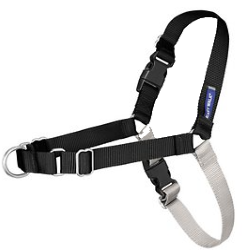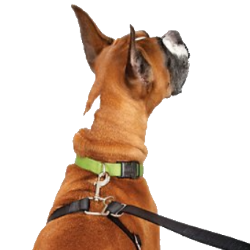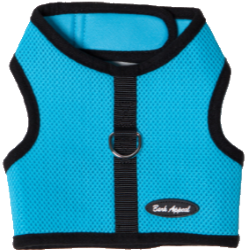Walking our 2 English Springer Spaniels is wonderful when they are off leash and not pulling us to romp and “spring” in the grass. This is really our fault as we have so many wonderful parks and lakes where we live that from “puppyhood” they were both swimming and walking off leash. It is rare when they are leashed as we like our jaunts to be in our parks where they get fully exercised.
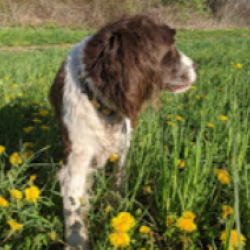

This caused us to learn about various collar options and some training we all failed at. Out worry was hurting our dogs with various collars being marketed to curb pulling. We know many vets, friends and trainers use the following collars and recommend them. These include Choke Collars, Prong and Shock Collars. However, these collars can possibly harm your dog without you knowing it and cause psychological as well as physical harm, some of the effects of misused or badly fitted collars can be:
- whiplash
- fainting
- spinal cord injuries
- paralysis
- crushing of the trachea
- partial or complete asphyxiation
- crushing or fracture of the bones in the larynx
- dislocation of the vertebrae in the neck
- bruising of the esophagus
- damage to the skin and tissue of the neck
- prolapsed eyeballs
- brain damage
The Prong Collar
These collars pinch the skin around the dog’s neckline when they pull and can pierce the skin. Because over time they developed scar tissue they build up a tolerance as they do not feel the piercing as much. This means overtime they will continue to pull. With these collars, dogs can become aggressive or fearful.
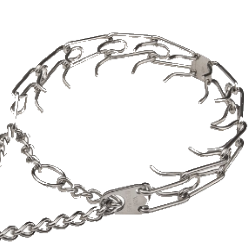
Shock Collars
Some of these collars can cause burns, extreme pain, heart conditions, severe anxiety and aggression. Also, some of these collars can malfunction and emit a chain of shocks, etc.
Choke Collars
There are many of these and bottom line is they can hurt the dog’s trachea and can cause some of the issues listed above.
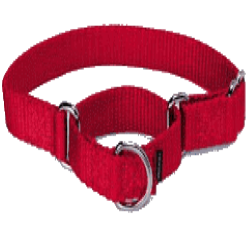
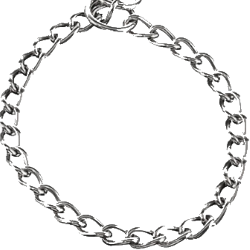
The bottom line is the safest and most comfortable way to walk a dog that pulls is to work with a trainer if you can, but always use a harness to alleviate pressure on the dog’s neck. It is also an easier way to pull your dog away from any possible trouble like collision with a bicycle, an aggressive dog, or rolling in smelly goose poop!
Suggested to us is the PetSafe Easy Walk Dog Harness, It has a front leash attachment that really helps curb a lunging active dog. The Thunderleash is also a good choice for this. If your dog is not a really strong puller a simple nylon web H style harness can be your solution. For tiny dogs a cozy little harness is the Wrap and Go from Bark Appeal. We purchased this for my mom. It is wonderful and easy to put on!
Whatever harness you choose, it is important to also use a decorative collar that can hold your dog’s ID, license, etc.
